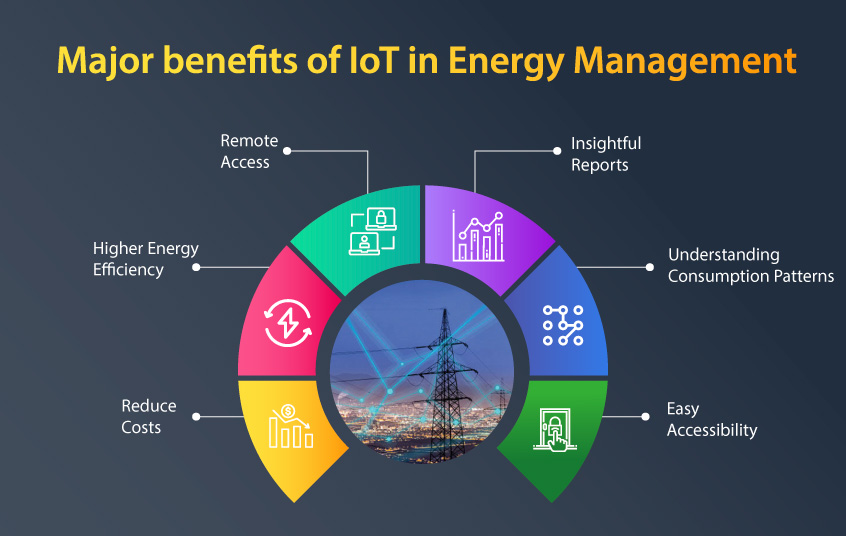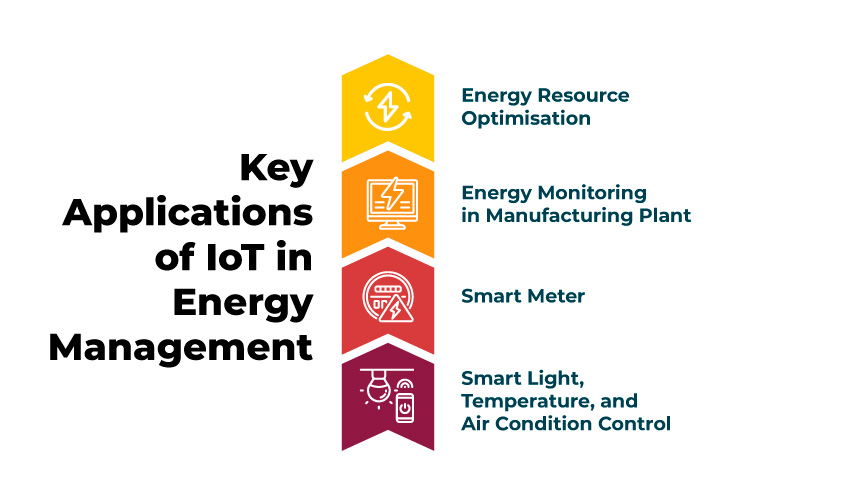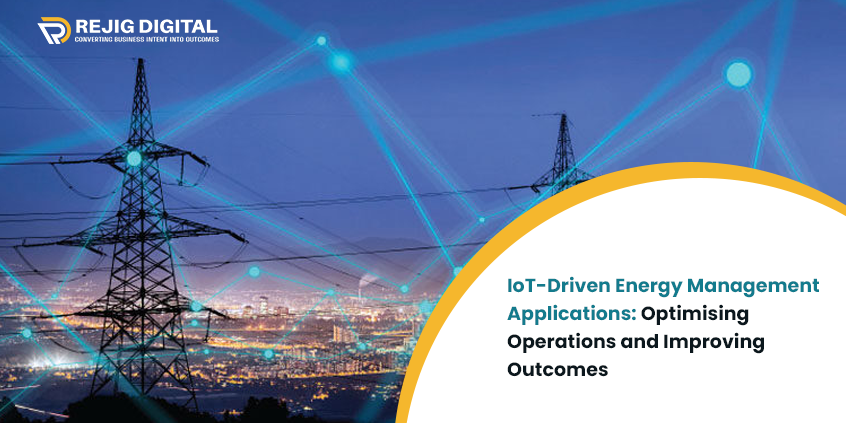With the growing demand for energy and the need to reduce carbon emissions, energy management has become an essential component of sustainable development. Hence, the integration of IoT in energy management provides an opportunity to achieve this goal by enabling real-time monitoring and control of energy systems. Further, we will delve into some of the ways in which IoT is being used to manage energy resources more efficiently and effectively.
The integration of IoT devices into energy management systems has resulted in the efficiency and optimisation of the industry. With the ability to collect and analyse data from a wide range of sources, energy managers can make more informed decisions about how to allocate resources and reduce waste.
According to Markets and Markets, globally the IoT market for the energy market is anticipated to grow up to USD 35.2 Billion by 2025 at a CAGR of 11.8%.
Let’s explore some of the key benefits of IoT in energy management which are empowering the sector.
Major benefits of IoT in Energy Management

IoT solutions for energy management have a wide array of advantages that can simplify the process of energy monitoring and management
Let’s explore how the IoT benefits energy efficiency.
-
Reduce Costs
IoT-powered energy management solutions led organisations to decrease energy spending and operating expenses and reduce manpower. As businesses can predict the consumption pattern through data analysis, hence they can spend and plan accordingly.
-
Higher Energy Efficiency
The data collected by sensors can regulate lighting levels and air conditioning in real time. IoT in energy management through smart sensors and detectors can minimise overall energy consumption.
-
Remote Access
The cloud access of data enables the remote monitoring and regulations of energy devices in real-time. The user can identify, track and analyse energy usage and prepare reports regarding device performance accordingly.
-
Insightful Reports
The various parameters and generating device performance data is possible with IoT-based real monitoring systems. The data generated by IoT sensors is measured in analytical reports and calculated for optimising efficient operations.
-
Understanding Consumption Patterns
IoT can generate reports, data charts, and visualisation that further allows users to analyse the information easily. These reports are helpful for tracking operational inefficiencies.
-
Easy Accessibility
IoT-enabled energy management is quickly and easily accessible, and usable which facilitates efficient control over operations to prevent any mishaps. IoT-powered devices give proactive alerts in case of asset failure.
Key Applications of IoT in Energy Management

The energy sector is a vital industry which entails the production of electricity, supports the transportation of goods, and allows a wide range of critical human activities. With the advent of IoT for energy management, there has become massive transformations in terms of energy utilisation.
Let’s explore some of the top IoT applications in smart energy management.
-
Energy Resource Optimisation
The optimisation of renewable energy resources is one of the most significant applications of IoT for energy utilisation. By deploying smart sensors that regulate the temperature in factories, halls, and buildings, energy consumption can be optimised, resulting in significant energy usage.
In addition, businesses and organisations can install smart sensors in buildings to turn off or turn on energy consumption based on room occupancy. This application has several benefits for the energy sector, as it not only saves a considerable amount of energy that would otherwise be wasted but also connects the entire sector through the internet for improved operations in the long run.
-
Energy Monitoring in Manufacturing Plant
The traditional method of energy monitoring is manually keeping a record of energy consumption in a notebook or excel file. However, this approach has various limitations. The manual monitoring doesn’t provide a holistic view of energy consumption across all the machines in a manufacturing site. In fact, it is hard to understand the consumption pattern at different locations within the factory.
The IoT-powered solution can centrally monitor energy consumption across all the assets of manufacturing plants. It will provide a centralised dashboard which gives access to the plant head and maintenance team with complete visibility. As a result, it is easier to identify patterns and schedule machine maintenance whenever required.
IoT can optimise energy consumption by providing real-time data on electricity, water and gas usage in the entire plant. Furthermore, IoT solution also provides insights into how much energy each device consumes and how much it costs per unit of production. Having such information allows businesses to work towards reducing carbon footprint, enhancing productivity and growing in a way that is sustainable to the environment.
-
Smart Meter
Smart metres are one of the core applications of IoT. Smart metres measure and analyse energy consumption for households, buildings, and organisations, identifying areas where energy is being used most and where conservation is possible. With IoT-enabled smart metres, customers can receive detailed reports of their energy consumption patterns, as well as detect inefficiencies. This technology can make the energy sector more efficient and transparent.
Smart metres also facilitate two-way communication between utility companies and consumers. Overall, in order to fully utilise IoT in the energy sector, it is crucial to recognise the potential benefits of energy consumption and conservation.
-
Smart Light, Temperature, and Air Condition Control
One of the most apparent ways to save energy is a reduction in wasting the same. Smart lighting, learning thermostats and modern sensor-based HVAC systems are created in a way which can automatically maintain the perfect conditions in residential and office spaces and keep the use of energy at an optimum level.
The lighting, humidity, movement, CO2 level system etc, are equipped with sensors which can change the regimes as per the changing conditions. Therefore, these systems can present an abundant amount of energy.
The modern-day IoT energy efficiency applications are easily available to end-users. For instance, smart lighting that dims according to depending on the amount of daylight can automatically. As a result, the residents and offices using IoT-powered energy devices can save a lot on energy consumption which also keeps the bills minimal.
The Ending Note
The application of IoT in the energy sector has brought about significant changes in the way energy is consumed and managed. With smart sensors, predictive protocols, and proactive repair mechanisms, the energy sector has become more efficient, transparent, and cost-effective.
The use of IoT in the energy sector has also enabled better communication between utility companies and consumers, thus empowering individuals to monitor and manage their energy consumption patterns. With IoT, we can move towards a more sustainable future with having innovative solutions for energy conservation and efficient resource management in hand.
Rejig Digital is a renowned provider of IoT business solutions to diverse industries. Our IoT solutions -Accrue and Arete- can help you to elaborate your idea for setting up secure technology infrastructure for advanced data tasks.




